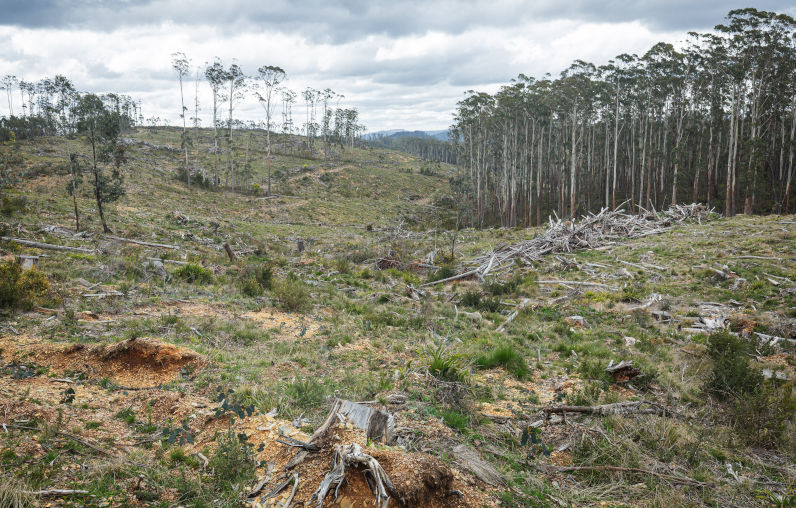If you go down to the forests today, you’re in for a big surprise (mass deforestation)
October 21, 2025
Visit many areas of state forest in parts of Victoria and you might get a shock – the forest isn’t there.
It used to be there — logged four, five, six or ten years ago — and once stood as tall, straight trees, sometimes more than 50 metres high. Now, no longer. The forest has failed to regenerate after being logged by former Victorian Government agency, VicForests.
The photo below is far from an isolated case. Our extensive analyses of the main wood production region in Victoria — the Central Highlands — show that more than 8000 hectares of logged forest has not been properly regenerated. Alarmingly, the area of failed regeneration has been increasing over the past decade. More and more logged areas no longer support trees where they once did.
Forests that have not regenerated after logging represent a clear form of deforestation. Deforestation is a major global issue driving both escalating climate change and biodiversity loss. This is why Australia signed international agreements to both halt deforestation and to prevent biodiversity loss. And yet, this problem is evident in our own backyard.
The Victorian Government and its former logging company, VicForests, are by law supposed to regenerate forests after they have been logged. Yet the government has clearly failed to meet both its legal obligations and its responsibility to taxpayers to restore forest cover once trees have been cut down. Environmental groups would be well within their rights to take legal action to compel the government to meet these obligations.
Beyond the legal requirement, why does regenerating forests matter? It matters for many reasons, but a critical one is because protecting forests is the most effective way to store large amounts of carbon in the landscape – a vital step in reducing emissions and tackling dangerous climate change. In fact, careful field-based empirical measurements show that Victoria’s native forests are among the most carbon dense forests in the world – holding up to 1860 tonnes of above-ground carbon biomass per hectare. Obviously, the climate protection and carbon storage role cannot be performed if areas that should be forests are no longer forests!
A second reason to restore forest cover is to provide habitat for forest-dependent wildlife. The area shown in the image lies near forest once supported the critically endangered Leadbeater’s Possum. It will not be potential future habitat in the absence of a forest.
The current Coalition opposition in Victoria has called to reinstate the native forest logging industry. This would not only perpetuate losses from a financially unviable industry, but would also intensify deforestation through regeneration failure. No responsible government — of any political persuasion — should allow this to happen.
Rather than reversing deforestation caused by VicForests, the Victorian Government seems more interested in pandering to the special interests of the recreational deer hunting fraternity, treating much of the forest as a “game reserve”. It appears oblivious to the opportunities for regional jobs and economic growth that could come from forest protection and nature-based tourism.
Meanwhile, the Australian finance sector has recognised the importance of investing in forest protection and restoration. A Green Bond prospectus has been developed for the Central Highlands forests and the proposed Great Forest National Park. The bond provides for investment to regenerate logged forests — at a cost of about $5000 per hectare — and enjoys strong support from both the community and the finance industry. Unfortunately, this support is not shared by the Victorian premier or the environment minister.
We can only hope that, in future, rational and responsible decisions will prevail. Then, if you go down to the woods, you might once again see forests being properly regenerated — tall trees regrowing where they belong — helping Australia tackle both the climate and biodiversity crises.
The views expressed in this article may or may not reflect those of Pearls and Irritations.
